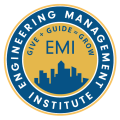In this episode, Nick Heim is joined by John-Michael Wong, Dave Martin, and Ayush Singhania to discuss how AI in structural engineering is transforming workflows, reshaping engineering leadership, and redefining value across the AEC industry. From automation and data sharing to human judgment and strategic planning, the conversation dives into how firms can begin adopting AI tools for engineers, what leadership needs to consider, and how entry-level engineers and project managers can prepare for the future of digital transformation in construction.
Engineering Quotes:
Here Are Some of the Questions I Ask John-Michael,Dave Martin, and Ayush Singhania:
- How is AI in structural engineering reshaping workflows and decision-making across the AEC industry?
- What misconceptions do engineers and firm leaders have about AI tools for construction and design?
- What should engineering leadership consider when adopting AI-driven solutions in their firms?
- How do build vs. buy decisions impact the scalability of AI in engineering workflows?
- What skills should entry-level engineers and project managers develop to stay competitive in digital transformation for construction?
- How can firms balance automation with human judgment in structural engineering processes?
- What role does coding play in the future of engineering careers within AI-powered environments?
- How can firms begin integrating AI in structural engineering without disrupting existing systems?
Here Are Some Key Points Discussed in This Episode About How AI in Structural Engineering Is Transforming Workflows and Leadership in the AEC Industry:
- AI in structural engineering does not change engineers’ responsibility to design safe, resilient structures. It transforms how work is delivered across the AEC industry. Digital-first engineering workflows shorten timelines and allow professionals to focus on complex design challenges. Automation accelerates routine tasks, while human judgment ensures performance, resilience, and collaboration. Engineers gain more time to prioritize sustainability and high-quality outcomes. Codes, standards, and reference materials—when made computer-readable—unlock their full potential as data sources for AI-powered workflows.
- Many engineers and firm leaders mistakenly view AI as a passing trend or limit its scope to chatbots. In reality, AI tools for construction and design include computer vision, automation, translation, and other technologies that enhance engineering workflows. Misconceptions often stem from limited exposure to practical applications and a narrow understanding of how AI integrates into daily engineering tasks.
- Successful AI adoption in engineering firms begins with clear policies and strong leadership. Secure access, active encouragement, and alignment with business goals turn AI from an experiment into a strategic advantage. Long-term success comes from staying human while scaling with technology. Relationships, engineering judgment, and client value remain central as AI becomes part of daily practice.
- Build-versus-buy decisions directly affect the scalability of AI in engineering workflows. Smaller firms typically benefit from off-the-shelf AI tools, while larger firms may justify investing in custom development. A genuinely useful AI solution solves a clear problem from start to finish. Live demos with developers, rather than sales presentations, reveal whether a product delivers real engineering value.
- Expectations rise at every career stage. Entry-level engineers are expected to use AI and coding tools to accelerate learning, while project managers must adapt workflows and lead innovation. Beyond technical adaptability, continuous learning in engineering stands out as the most critical skill. Professionals who leverage AI to improve their capabilities remain competitive in the digital transformation of construction.
- Firms can balance automation with human judgment by assigning AI to repetitive, data-heavy tasks while engineers focus on safety, client outcomes, and high-value decisions. Automation in structural engineering accelerates routine work, but human insight ensures performance, resilience, and collaboration. This balance allows engineers to maintain control over critical outcomes while benefiting from increased efficiency.
- Practical first steps for integrating AI in structural engineering include creating an internal AI policy and giving staff secure access to core tools. Small automations and quick proofs of concept encourage innovation without heavy costs or disruption. Sharing and standardization remain difficult due to intellectual property concerns and fragmented systems, but vertical data flows through architects, contractors, and owners already offer a foundation for integration.
More Details in This Episode…
About the Guests:
John-Michael Wong, PhD, SE

Dave Martin, SE

His primary focus is large healthcare projects, though his experience also includes several seismic retrofit and tenant improvement projects. Dave is a member of the ASCE 41 committee and former secretariat. Currently, Dave serves on the NCSEA AI Grant team, which promotes practice-specific education and advancing the use of AI in the structural engineering profession. Dave is passionate about structural engineering because it uniquely combines science and design, form and function, and he finds great fulfillment in seeing his designs come to life, serving communities safely.
Ayush Singhania, PE

Ayush is passionate about harnessing computational power to eliminate tedious workflows, empower engineers, and elevate design outcomes by applying advanced AI technologies in the built environment.
He holds dual master’s degrees, an M.S. in structural mechanics from Stanford University and an M.S. in computer science (specializing in AI) from Georgia Institute of Technology, and is a licensed professional engineer in California.
About the Host: Nick Heim, P.E.

Nick’s interests lie at the intersection between the built world and technology, and he can be found looking for the ever-changing answer to the question, “How can we do this better?” Nick can be found on LinkedIn, producing content about the use of technologies in his civil engineering career and small business.
Sources/References:
KPFF Consulting Engineers
Degenkolb Engineers
HOK
NCSEA (National Council of Structural Engineers Associations)
Cold-Formed Steel Engineers Institute (CFSEI)
American Institute of Steel Construction (AISC)
American Concrete Institute (ACI)
NDS (National Design Specification for Wood Construction)
SDPWS (Special Design Provisions for Wind and Seismic)
Generate (Mass Timber Consulting and Technology)
OpenSees (Open System for Earthquake Engineering Simulation)
Tesla
Innovation Design Consortium (IDC)
Y Combinator Startup School
NVIDIA
ChatGPT
Anthropic
AWS (Amazon Web Services)
Microsoft Copilot
Siri (Apple)
Google AI
Google Assistant
Revit (Autodesk)
ETABS (CSI – Computers and Structures, Inc.)
Microsoft Teams
Connect with John-Michael Wong, PhD, SE, on LinkedIn
Connect with Dave Martin, SE, on LinkedIn
Connect with Ayush Singhania, PE, on LinkedIn
AEC PM Certification
AEC PM Connect
Project Management Accelerator™
Engineering Leadership Accelerator™
Please leave your comments, feedback, or questions in the section below.









